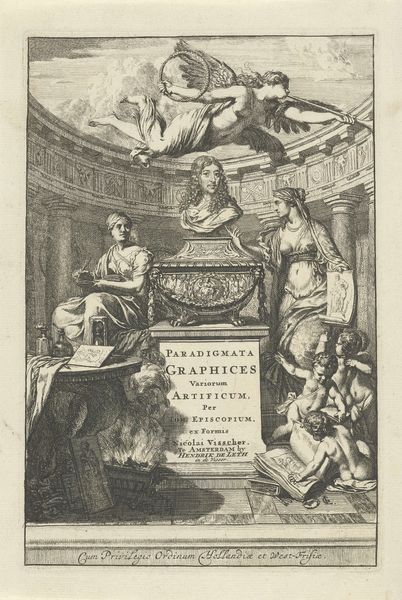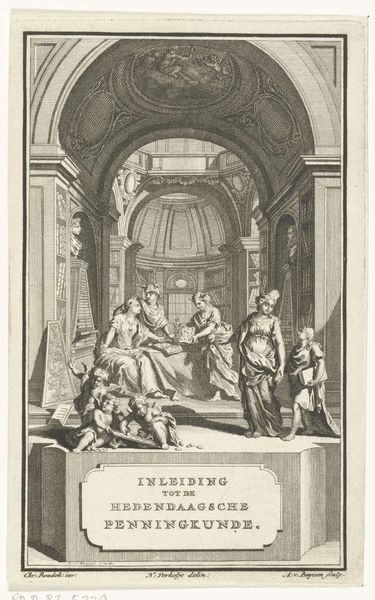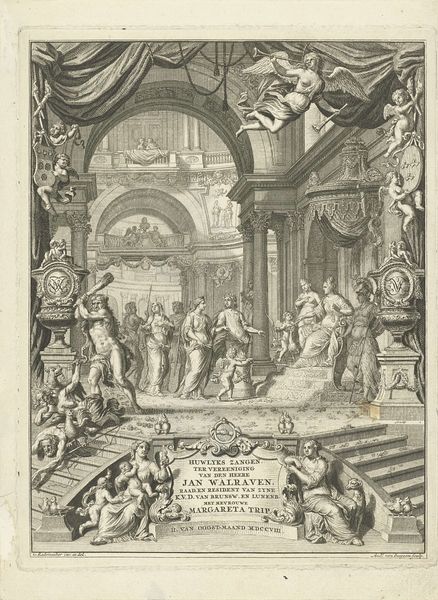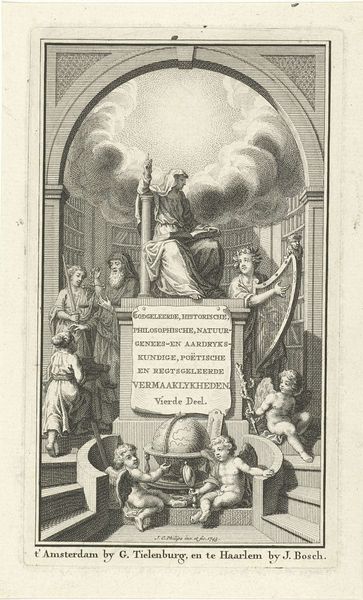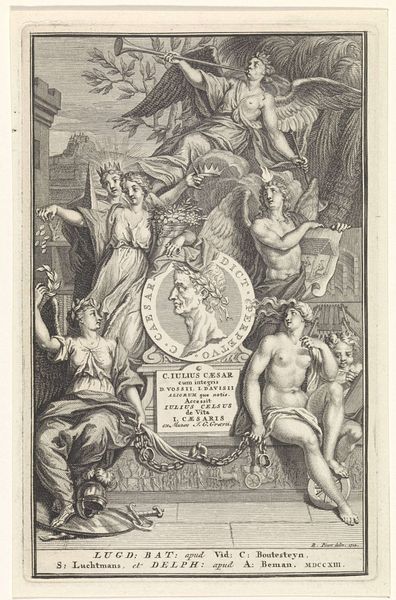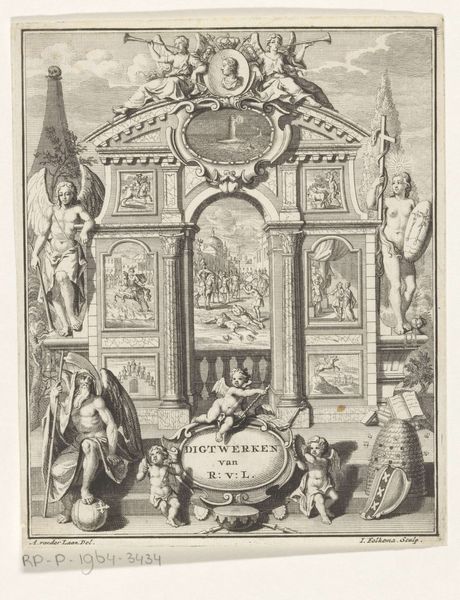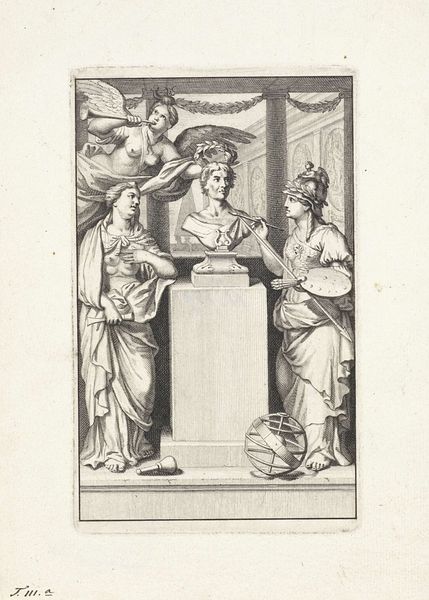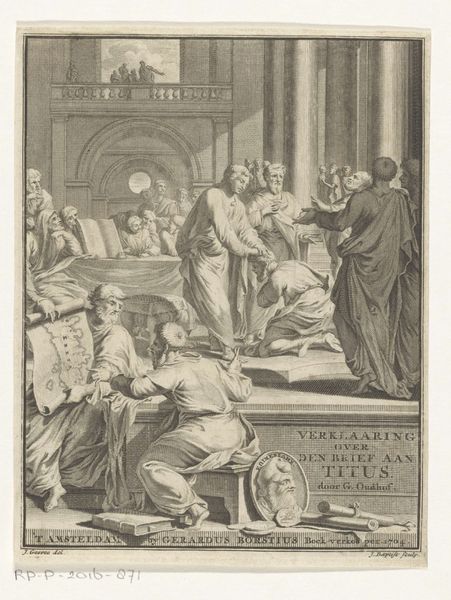
Copyright: CC0 1.0
Editor: This is Gérard de Lairesse's "Title Page," it looks like it might be an etching or engraving, given the detail in the line work. The figures are so classical, but there's also something unsettling about the way they're arranged. What strikes you about the symbolic language in this piece? Curator: The allegorical figures, the cherubs, the bust… they're all referencing a very specific visual vocabulary, one rooted in classical learning and the power of imagery. Notice how the artist arranges these images to imply memory and shared knowledge. What emotions do these established symbols invoke? Editor: I guess I see a sort of idealized artistry, but also maybe a distance from the realities of image making at the time. Curator: Precisely. This distance, this idealization, is itself a powerful symbol. It speaks to the enduring human need to find meaning and order in the visual world. Now, what does that tell you about how we interact with images even today? Editor: That’s a good point, it helps me recognize how symbols evolve and how they’re rooted in a history of shared cultural understanding. Curator: Indeed. It is interesting how de Lairesse challenges us to see the continuity and change inherent in visual symbolism.
Comments
No comments
Be the first to comment and join the conversation on the ultimate creative platform.
